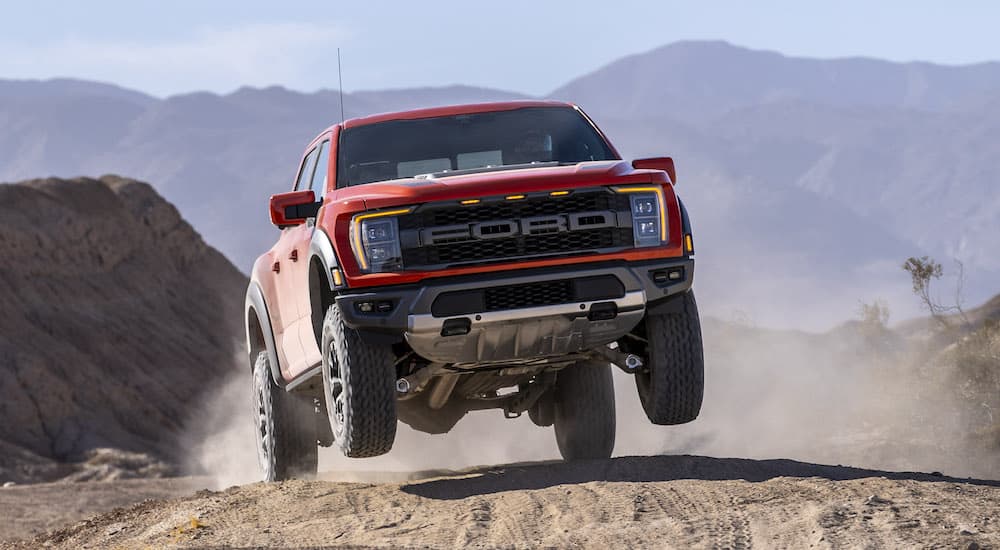Adjusting your vehicle’s suspension is one of the easiest ways to improve performance and handling, but it usually comes at a cost. When it comes to cars, comfort and performance tend to be mutually exclusive, with one almost always suffering at the expense of the other. It can be a difficult balance to strike, and while manufacturers typically err on the side of comfort, that doesn’t mean you have to. Tweaking your vehicle’s springs and dampers can transform a stolid daily driver into a fine-tuned racing machine…or as close to it as you’re going to come without springing for an expensive Italian sports car. What are the advantages of stiffening up your suspension, and how do springs and dampers factor into the equation? Follow along as we explore the role these two components play in achieving a balance between comfort and performance and learn how you can tweak your vehicle’s suspension to improve responsiveness behind the wheel.
Springs Rates and Lengths
Springs do the brunt of the work when it comes to your vehicle’s suspension. Every time you hit a bump, these hard-working components compress to absorb the force of the impact, then spring back to their original shape, releasing energy and making for a smooth ride. Springs are typically measured by what’s called spring rate, which describes the amount of force needed to make a spring compress by one inch. For example, a 200 lb/in spring requires, you guessed it, 200 lbs to compress by one inch. When adjusting your suspension, spring rates are an important factor to consider.
A higher spring rate will lead to a firmer, less forgiving suspension while reducing body roll and lean. This is perfect for high-octane applications like on-track racing, where drivers are more concerned about handling and usually don’t have to worry about bottoming out after hitting a particularly nasty bump or pothole. The spring rate on a drag racing car, for example, could be as high as 650 lb/in, a figure that would be far too unforgiving for everyday use on the average city street.
Springs also play a big part in determining a vehicle’s ride height, and changing spring length is the easiest way to lift or lower your car. This can be an important factor to consider in the world of racing, where less ground clearance means a more aerodynamic and better-handling ride. While you can simply install shorter springs to lower a car, another option is adjustable coilovers, which allow you to change the ride height by compressing the springs.
Downforce is another factor to consider when deciding on spring stiffness. In simple terms, downforce is the downward force exerted on a vehicle by aerodynamic components like spoilers. Downforce is usually seen as a good thing in auto racing, allowing vehicles to maintain higher cornering speed by ensuring all four wheels firmly grip the road below. It makes for a more stable ride but can actually be a negative when it comes to reaching top speeds since more downforce equates to more drag. Ever wonder why some F1 cars have adjustable spoilers? These allow drivers to increase downforce when cornering and decrease it when ripping down a straightaway.
Given the myriad advantages of stiffer springs, why would any driver opt for a lower spring rate? It really comes down to two main factors: comfort and grip. The comfort part is relatively obvious since the more force the springs can absorb, the smoother the ride, but the grip element might be a little harder to wrap your head around. To simplify the process, picture a vehicle that has no springs at all, just a solid, fixed suspension. Every time you hit a bump, frost heave, or dip, the wheels would momentarily lose contact with the ground as you catch a little inadvertent air. On a vehicle with softer suspension, on the other hand, the springs would absorb a majority of this force, allowing the wheel to travel over the obstacles without losing contact with the road. It might seem negligible, but it can make all the difference behind the wheel, especially at higher speeds.
Of course, there’s no right answer when it comes to soft versus stiff springs. Ultimately the choice is up to the driver, who will want to consider their driving style, the type and condition of the roads (or tracks) they typically drive on, the vehicle’s curb weight, and other factors. The type of springs that will allow you to unlock the potential of that new sports car will be quite different from those that make for a smooth, comfortable ride in the family SUV, so there’s really no one-size-fits-all solution.

Dampers, Bump, and Rebound
Springs do a good job absorbing force, but dampers help keep the whole system in check. Without dampers, a vehicle’s springs would keep springing until the cows come home, making for a decidedly uncomfortable and silly-looking ride. Dampers drastically reduce the time it takes for the springs to return to their normal resting position, allowing them to regain their composure before you hit the next bump in the road.
Dampers also have the added benefit of preventing the springs from completely compressing or extending in a way that could damage them or other surrounding components. Called bump and rebound in engineering speak, this sort of protection not only reduces the frequency of costly repairs but also determines how much roll the vehicle experiences when cornering. To clarify, bump refers to how fast a damper can compress, while rebound is a measure of how quickly it can extend following a compression. Adjusting these two factors allows drivers to better control grip and ride quality.
For example, by adjusting a damper’s bump, drivers can change how much a vehicle leans when entering or exiting a corner, addressing excess body roll. Adjusting the bump can also play into how a vehicle rides over bumps in the road, preventing it from either bottoming out or hitting the road with too much force after catching a little air. On the other hand, adjusting the rebound helps to control how far the spring and damper can extend. Rebound slows the rate at which the spring returns to its neutral position, making for a smoother ride.
Types of Dampers
Dampers might sound complicated, but in reality, they’re little more than a push-rod in a sealed tube filled with oil. When the damper is compressed, this oil provides a level of resistance that works against the spring’s bounce, reducing the oscillation of the spring. Of course, that’s a very basic definition, and there have been countless innovations in the world of dampers since their introduction. One, two, three, and four-way adjustable dampers can all be found on today’s market, giving drivers plenty of options when it comes to fine-tuning their suspension. Most coilovers will include adjustable damping as well as adjustable ride height.
Although you won’t find many aftermarket options, most high-end sports cars now come from the factory with adaptive dampers. There are a couple of different ways to do this, including the use of magnetorheological fluids and electromagnets, but they all have the same effect. An adaptive damper uses a computer to adjust its damping rates on demand, which means you can drive around comfortably on the streets and then stiffen up the suspension with a push of a button when you visit the track.
Some dampers use external reservoirs to deal with the heat generated by the shock-absorbing process as the springs compress and the oil is forced through the piston. Why is this important? The hotter the oil gets, the thinner it becomes, and thin oil isn’t nearly as useful when it comes to shock absorption. These external reservoirs take the form of small cylinders attached to the side of dampers, allowing the damper to increase its oil supply without upsizing the damper itself.

Fine-Tuning Your Suspension Pays Big Dividends
Whether you’re looking to take the checkered flag at your local race track or fine-tune your daily driver, adjusting your springs and dampers can have a huge impact on your experience behind the wheel. If you want to improve handling and don’t mind a slight reduction in overall comfort, upgrading your suspension can pay massive dividends when it comes to street performance. Springs and dampers can also be an important factor when it comes to more rough-and-tumble pursuits like off-roading, where proper shock absorption can spell the difference between an enjoyable outing and one that leaves you with a sore saddle or a broken suspension. Sure, most drivers might not need to worry about body roll or downforce on a daily basis, but for those seeking an edge in the world of motorsports, adjusting your suspension is a great place to start.

